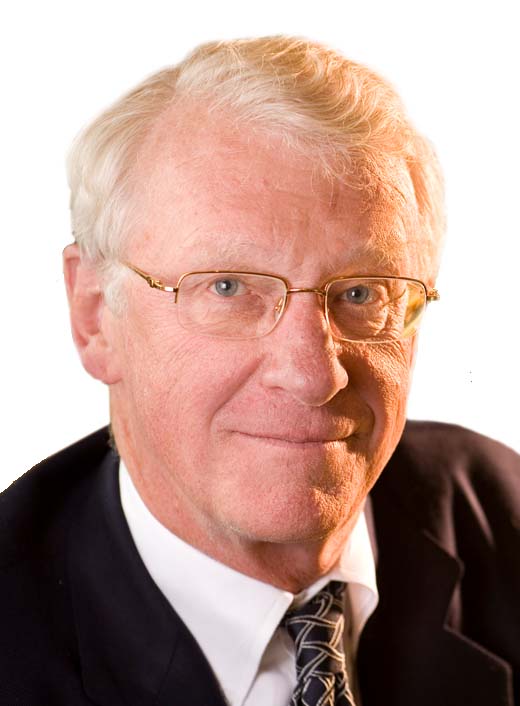September 1, 2025 | 22 mins 35 secs
John Hathaway of Sprott highlights gold’s resilience, citing U.S. fiscal imbalances, Federal Reserve pressures, geopolitical risks and central bank de-dollarization as key drivers of support. He warns that extreme equity market concentration and leverage could spark a downturn, triggering stronger flows into gold and gold miners, which remain under-owned despite strong earnings.
Video Transcript
Charlotte McLeod: I'm Charlotte McLeod with Investing News.com. John Hathaway, Managing Partner at Sprott and Senior Portfolio Manager at Sprott Asset Management USA, is here today with me. Thank you so much for being here. It's great to have you.
John Hathaway: Thank you, Charlotte.
Charlotte McLeod: It's good to catch up with you. We will spend time today discussing some of the points in one of your recent pieces, A Cure for Financial Dementia. I'll also add the link to the video description if people want to check it out.
There are lots of directions to take. We could start with gold, which has definitely had a historic year. It reached the $3,500 per ounce level. Of course, right now, we're experiencing a little pullback. I wanted to begin by asking what factors support gold right now.
John Hathaway: There are almost too many to mention. First and foremost are the fiscal issues facing the U.S.: the oversupply of new Treasury issuance and the questions around whether the market can absorb them at these prices without the Fed stepping in to manipulate interest rates, as they tend to do.
You have all of this badgering of the Fed by the Trump administration, where people are fretting about whether the Fed will remain independent or become more under the administration's control, which would move in the direction of yield curve control, fiscal dominance, etc. That's two.
Three would be the ever-present concerns over the geopolitical situation. There's not enough time to go into all of that, and I'm certainly not an expert on any of them. You only have to look at the papers to see what those are.
The other thing that comes to mind is the gradual movement away from the U.S. dollar as an international reserve asset. Conversely, there is a movement in the direction of central banks, which certainly own more physical gold to replace the dollar. That's a slowly progressing factor on a day-to-day basis. It underpins the gold price, and I've probably forgotten a couple, but those are the main things.
Charlotte McLeod: I think it's fair to say that there are almost too many factors to name, and there's not enough time to go into every single one right now. People have gotten used to this high price level very quickly.
John Hathaway: If you remember what happened in 2007, when we had a meltdown, basically the entire financial system. I'm not calling for that. I'm not expecting it. Again, this isn't my expertise, but I feel like we're in the top quartile, maybe the top decile in terms of exuberance, as Greenspan once called it, of overvaluation.
We're in a danger zone. In my paper, I talked about a bunch of them (see A Cure for Financial Dementia). You have valuations. Certainly, we're at the extreme levels of valuation. Valuation can stay high for a long time. It's not necessarily a timing. It's not an aid to timing. You have heavy retail participation, which is not necessarily bad by itself. Still, you look at the amount of day trading that's taking place in these zero-day-to-expiration options, which are 62% of options activity.
You have extreme emotional support for a very few. What I'm trying to say is the market is heavily concentrated. A very small number of names support the averages. I can go back to when I was starting in this business in the 1970s, we had something called the Nifty 50, and it's like a replay of today, or today is like a replay of the '70s, where all the institutions were heavily crowded into a few favorite names. They called them the Nifty 50 back in the '70s.
Today, it's AI-related and similar. Market concentration is another thing. I don't want to go on too long about this. I do think that when the tables turn, and I think maybe within a year, a year and a half, I'm not a timing expert by any stretch of the imagination, but it seems to me that if you look at history, there are other times like this; for example in 2000, it was a similar kind of thing.
You had this mania in 2007 with mortgage-backed securities. Every mania is different, except that the common one is that you have market concentration and then leverage on top of that. I just saw today that margin debt topped 1 trillion for the first time. Market values are higher. The gross is bigger. The leverage could be bigger, but it's still a milestone.
In a downturn, as we had in '07, the 2000s and the mid-'70s, gold tends to get a bid, and it gets a bid by people who are incorrectly positioned in the market, and I would say that would be most investors. We can also say that gold is underowned and therefore flows out of the favorite names. The favorite positions in gold could substantially move the gold price.
When I look at sell-side research and what comes out of the strategy gurus on Wall Street, I don't think they have a clue as to what a reversal or a new inflow into gold and, more importantly, gold stocks, at least for us, could do to the price of both.
Gold is relatively illiquid compared to the flows that could come into it. I'm not calling about a 10% pullback or anything like that. I'm just maybe overly stressing that I'm not a market timing expert. When the psychology turns less favorable, and mainstream positioning comes into question, one of the things that investors have historically taken is defensive positions in gold shares.
In my view, that process needs to take more than six months—it needs to take three to five years so that people get worn out by not making money in their favorite names.
Charlotte McLeod: I think that's very true. I want to go a little bit deeper into gold prices and gold stocks. Before we go over there, I want to mention another factor I've been hearing when it comes to people talking about what could trigger this next leg in the gold price. I'm starting to hear more talk about interest rate cuts from the Fed, especially after last week's speech from Jerome Powell. I'm curious where you would put that in terms of your thinking.
John Hathaway: I didn't mention it, but thank you for bringing it up. Lower interest rates, especially if they come about with some sense that the Fed is being browbeaten and central bank independence is being threatened, just put a bad look on the whole fiscal and monetary discipline argument. I don't know whether that's priced in or not, but it's a helpful tailwind for gold and mining stocks.
Charlotte McLeod: Thanks for going into that one. Let's talk more about what's going on with the gold mining companies you mentioned. Even though the gold price is so high right now, the miners are starting to put out these very strong results. There's still a lack of interest from the general public.
It's a tough question, but what do you think would bring investors back in? Why do you think they're not interested right now? I know there are many things we can go into there, but I'd like to hear your thoughts.
John Hathaway: All the catalysts we discussed earlier—geopolitics, fiscal issues, de-dollarization—are present and will not disappear. That's probably why gold is trading effortlessly and with the appearance of effortlessness in this range of $3,200 to $3,400.
Any one of those catalysts could suddenly emerge and get more investors to consider gold and the miners. People articulate that. It's not as if it hasn't been discussed, but they're real. I'm not saying there's any way to dismiss them.
The one thing missing in this, and going back to the theme of my cure for financial dementia, is the tables being turned in the markets so that investors, broadly speaking, and I'm talking all the way from retail to institutional and official institutions. If their expectations for the returns are met, they can get in their standard menu of holdings, and we all know what they are.
If that sours, and believe me, I think it will. I couldn't tell you the exact date, but within two years is a reasonable bet. That is a catalyst for gold and gold miners that have not been priced in. It could be many things, but we're at a valuation where we're priced for perfection.
Picking one is difficult with the S&P 500 Index trading at a record level of enterprise value to sales. That's the Buffett Indicator. Just look at history and respect history and say, maybe I should have some exposure here where I don't have any. Most people would say we have 1% position. That's a CYA-type answer. That's like I've basically answered that question, tick that box.
There's no conviction. It's like I'm there if they're there, which most people aren't. If that changes, and we go from, let's pretend it's 1%, and that's probably more than it really is in terms of global AUMs, we figure $500 trillion. If it's 1% of that, I'd be surprised. If it goes to 2%, you'll see things happen to the gold price and mining stocks along the lines of what I said earlier.
Charlotte McLeod: Looking more closely at the gold mining stocks you mentioned, the last quarters have been very strong. I'm curious about what you think we'll see moving forward into the future. Are we going to continue to see this level of results, because I know in the previous gold bull market, some of the big companies were criticized for ultimately making poor investments and bad decisions there, and that might be now even why some people are a little bit wary of getting into the sector? Thoughts on their future performance?
John Hathaway: In my article, I quoted Galbraith, who said it takes 20 years for people in this business to forget the mistakes of 20 years ago. That's probably right. If you look at the cycles in the market, there's a new brand of idiocy every 20 years.
The inverse of that is that the mining companies did stupid things 20 years ago, and they did many bad things. I think I referred to them as juvenile. Maybe they've learned their lesson, at least for a while. What you're seeing now is more talk of increasing dividends. We're seeing a lot of share buybacks and M&A.
So far, our investment team, which manages Sprott's active portfolios in gold mining shares, thinks most of these acquisitions have been sensible divestitures that have streamlined portfolios. Companies like Newmont, for example, are doing that kind of thing.
For now, it looks sensible. By the way, in a rising gold price environment, many people look smart in retrospect because they bought X, Y and Z assets thinking the gold price was going to be $2,500, and it's $3500. Then everybody looks smart in that environment, but that's where we are. It will be a while before we see the derangement in large parts of the stock market.
Charlotte McLeod: I think that's reassuring to hear. Then I think the other thing that investors are wondering right now is where to focus on the gold stocks. The larger companies are delivering these strong returns, and people may wonder, is it time to move down the food chain? Of course, each person differs depending on what they're trying to accomplish with their portfolio. But any thoughts you would share there?
John Hathaway: Because there is so little research coverage of some of these mid-cap names. I've got to be careful with my compliance team, not to mention a bunch of them, but I would say anybody can look at our holdings. You can see many of these mid-cap names, where, as I said earlier, you will see potential earnings that exceed today's market caps. That's what we are looking for. That's what we're favoring.
Charlotte McLeod: I wanted to ask you about silver. Given your outlook for gold, what do you see coming for the silver price?
John Hathaway: It's hanging out below $40. We talked about it this morning on our daily call, and silver production. Mining is less than consumption. The market is in deficit. You've got structural things that favor higher prices. If all of these other things that I think will take gold higher fall into place, silver will get a bid. It tends to be more volatile than gold itself. It's a smaller market. It doesn't take as much money to move it. In order of magnitude, I think silver could do more in terms of percentage gains.
Charlotte McLeod: I think that's significant. I almost don't need to ask this question, but I will. I was going to ask about the silver equities and the opportunity there, which would also be quite significant. Maybe any advice on how to approach the silver stocks, given that the universe is quite a bit smaller than it is for gold, for example.
John Hathaway: It's much smaller. Many of our holdings have been taken over. The population of silver stocks that an investor could look at, and I don't have a number off the top of my head in terms of the aggregate market cap of the silver names, but it's quite small. Maria Smirnova, a key member of our portfolio management team, is the real expert on silver. She's written a lot, and it's on our website.
I think silver is a little bit more aggressive for those stocks. As far as dynamics go, silver tends to be in the slipstream of gold because it is a monetary metal. The population of silver stocks has shrunken because of all these takeovers, many of which we've participated in.
Charlotte McLeod: I think that's a very fair assessment there. I will let you go. Unless you had any final thoughts that you would leave investors with. I know it's a complex, tricky environment right now.
John Hathaway: This is to the generalist. I think being open-minded, paying attention to the space, avoiding complacency in your existing positioning and questioning it. Gold stocks and gold and silver are an answer. They're not the only answer. Maybe higher levels of cash would be appropriate—maybe fixed income. There are maybe long-term, long-dated Treasuries. I guess the quick answer to your question would be to question current positioning, and I think that that is not being done, but I think those who do and land some of their exposure in this space will be very happy 2 or 3 years from now.
Charlotte McLeod: That's a very nice way to wrap it up. Thank you so much for reviewing what's happening in gold and silver. This was great.
John Hathaway: Thank you for inviting me.
Charlotte McLeod: Of course. We hope to have you back soon. I'm Charlotte McLeod with Investing News.com, and this is John Hathaway.
Investment Risks and Important Disclosure
Relative to other sectors, precious metals and natural resources investments have higher headline risk and are more sensitive to changes in economic data, political or regulatory events, and underlying commodity price fluctuations. Risks related to extraction, storage and liquidity should also be considered.
Gold and precious metals are referred to with terms of art like "store of value," "safe haven" and "safe asset." These terms should not be construed to guarantee any form of investment safety. While “safe” assets like gold, Treasuries, money market funds and cash generally do not carry a high risk of loss relative to other asset classes, any asset may lose value, which may involve the complete loss of invested principal.
Past performance is no guarantee of future results. You cannot invest directly in an index. Investments, commentary and opinions are unique and may not be reflective of any other Sprott entity or affiliate. Forward-looking language should not be construed as predictive. While third-party sources are believed to be reliable, Sprott makes no guarantee as to their accuracy or timeliness. This information does not constitute an offer or solicitation and may not be relied upon or considered to be the rendering of tax, legal, accounting or professional advice.




